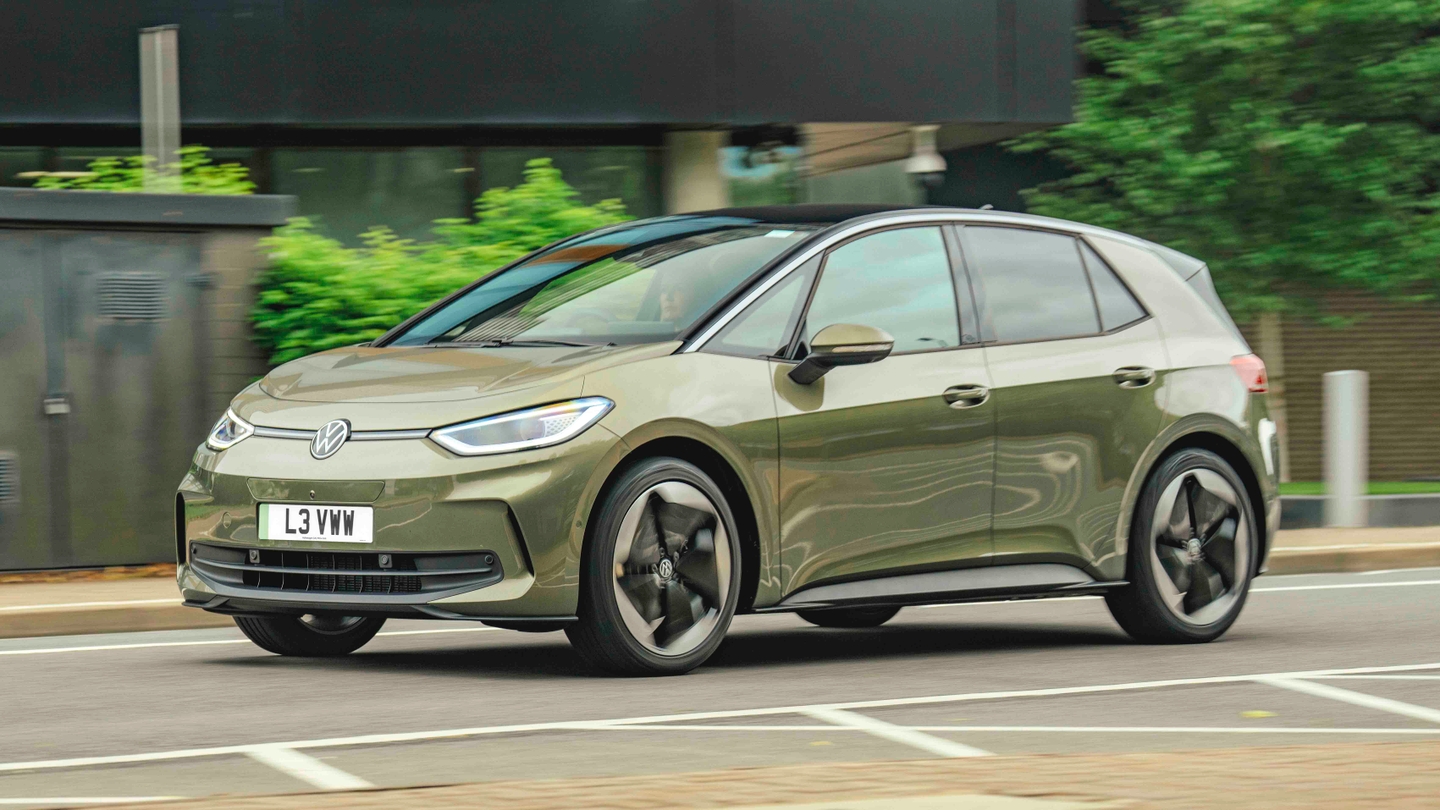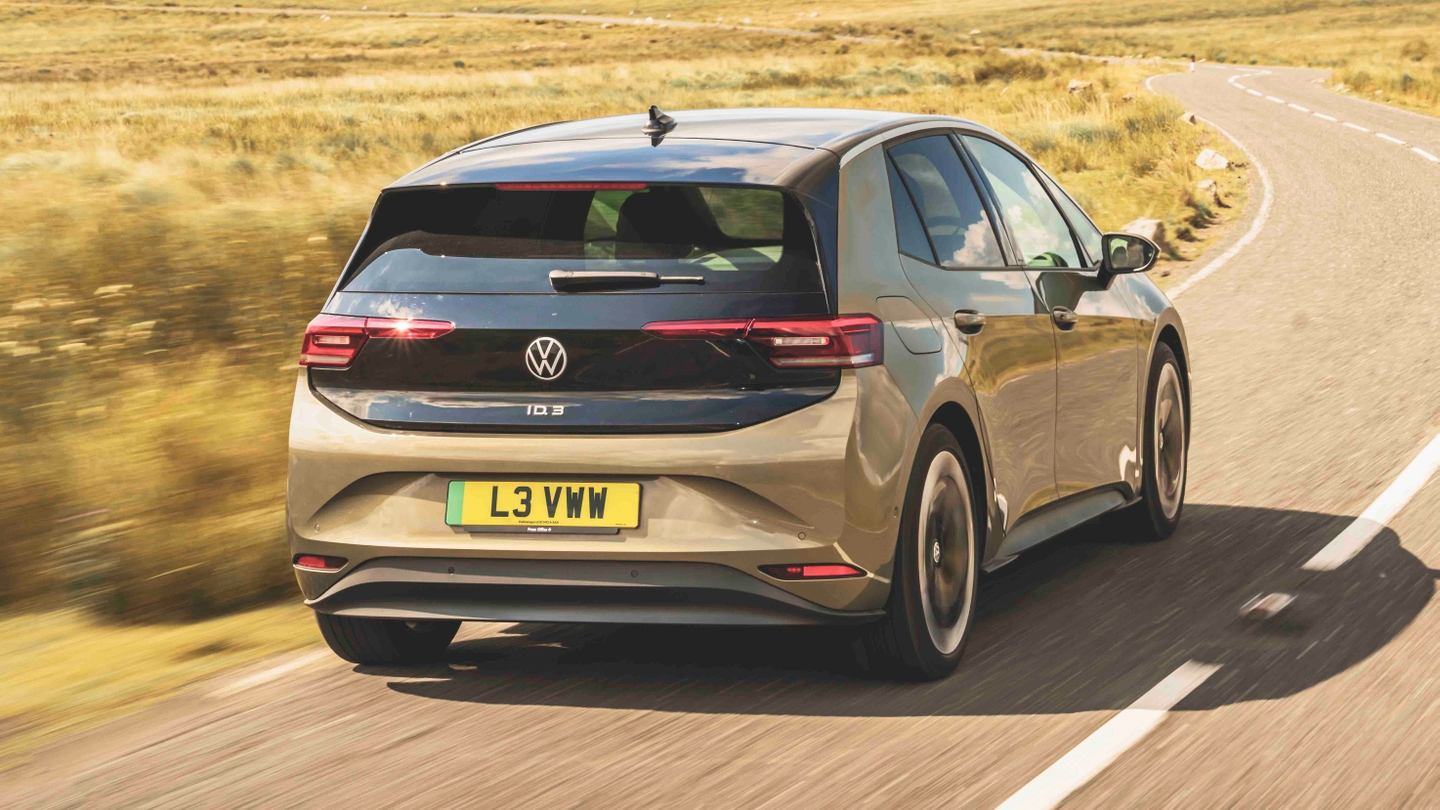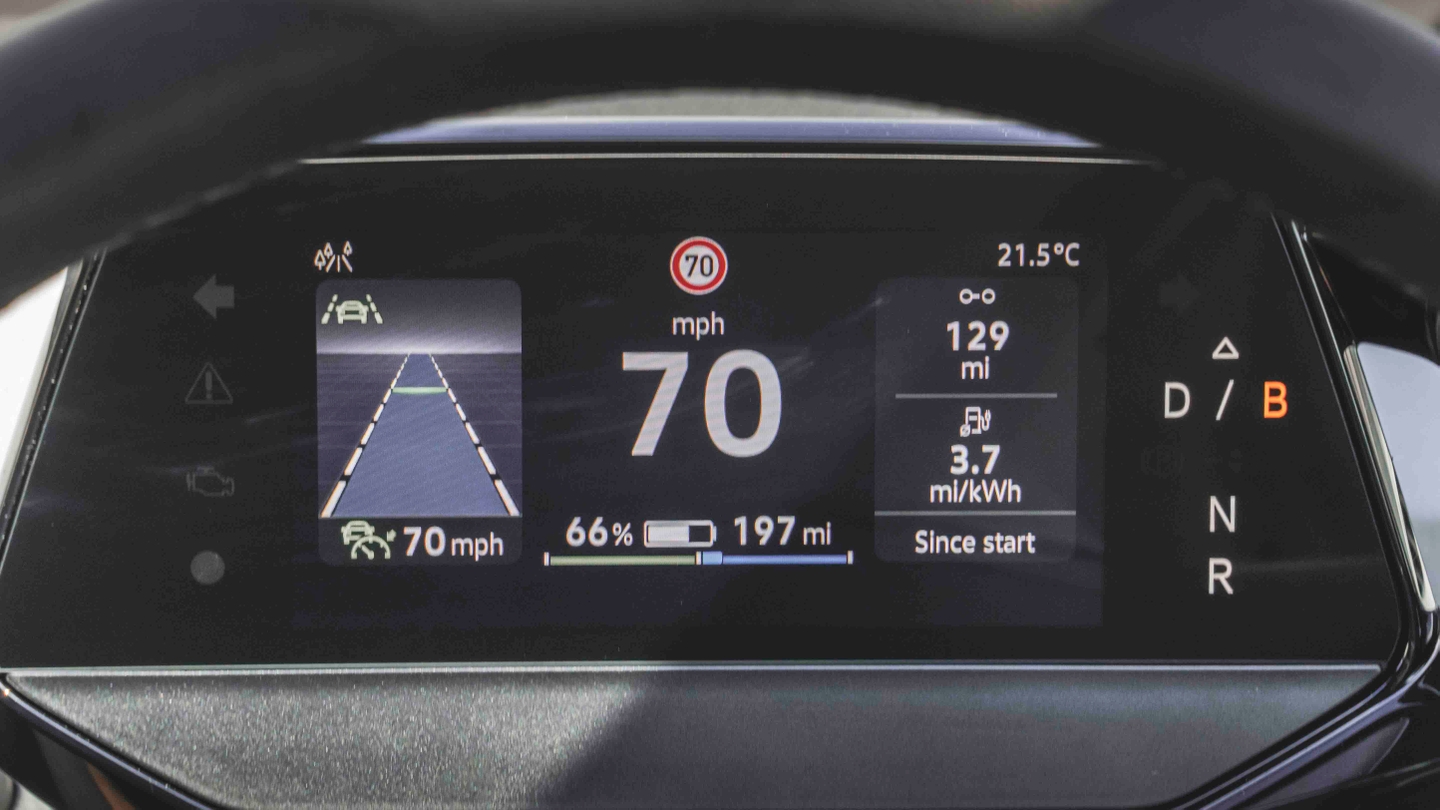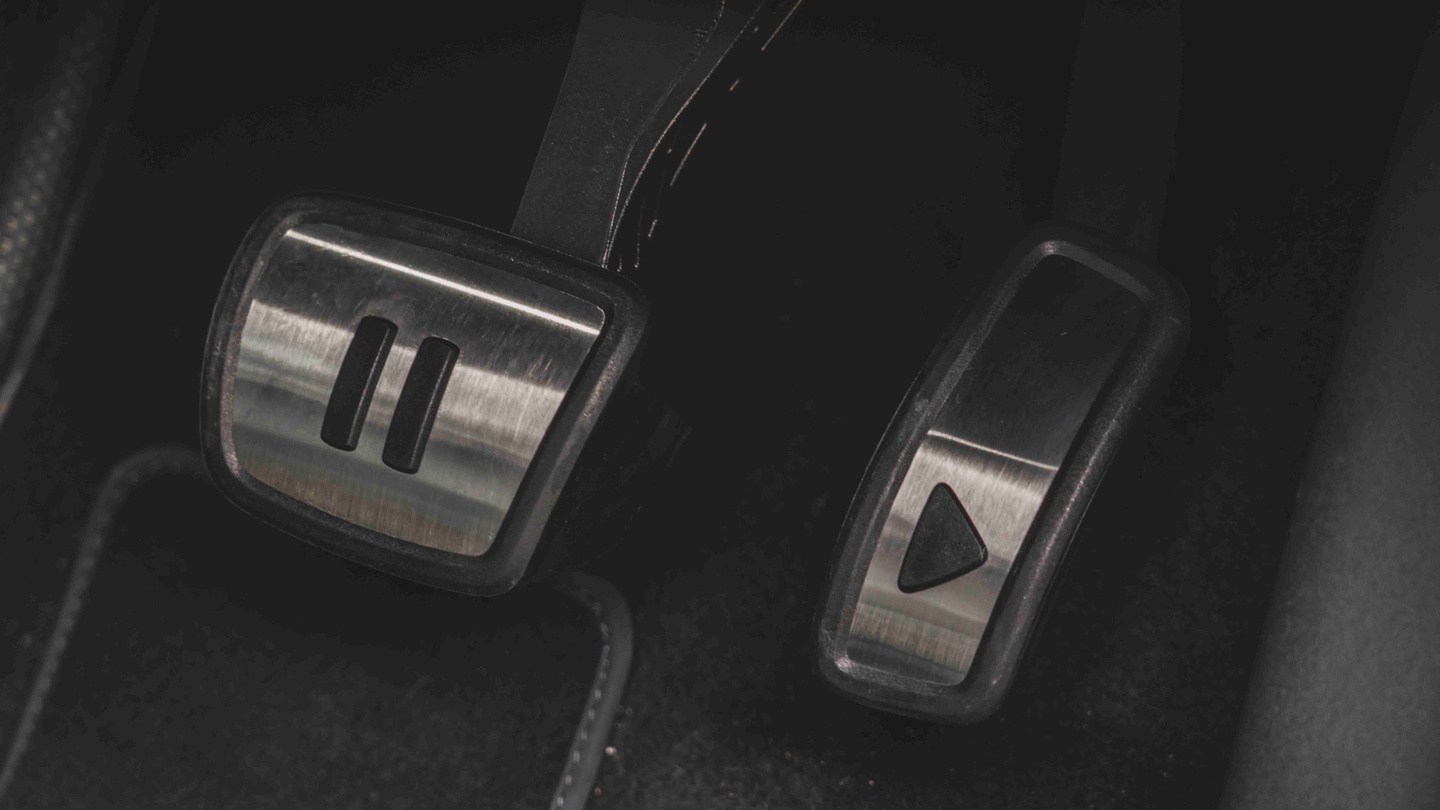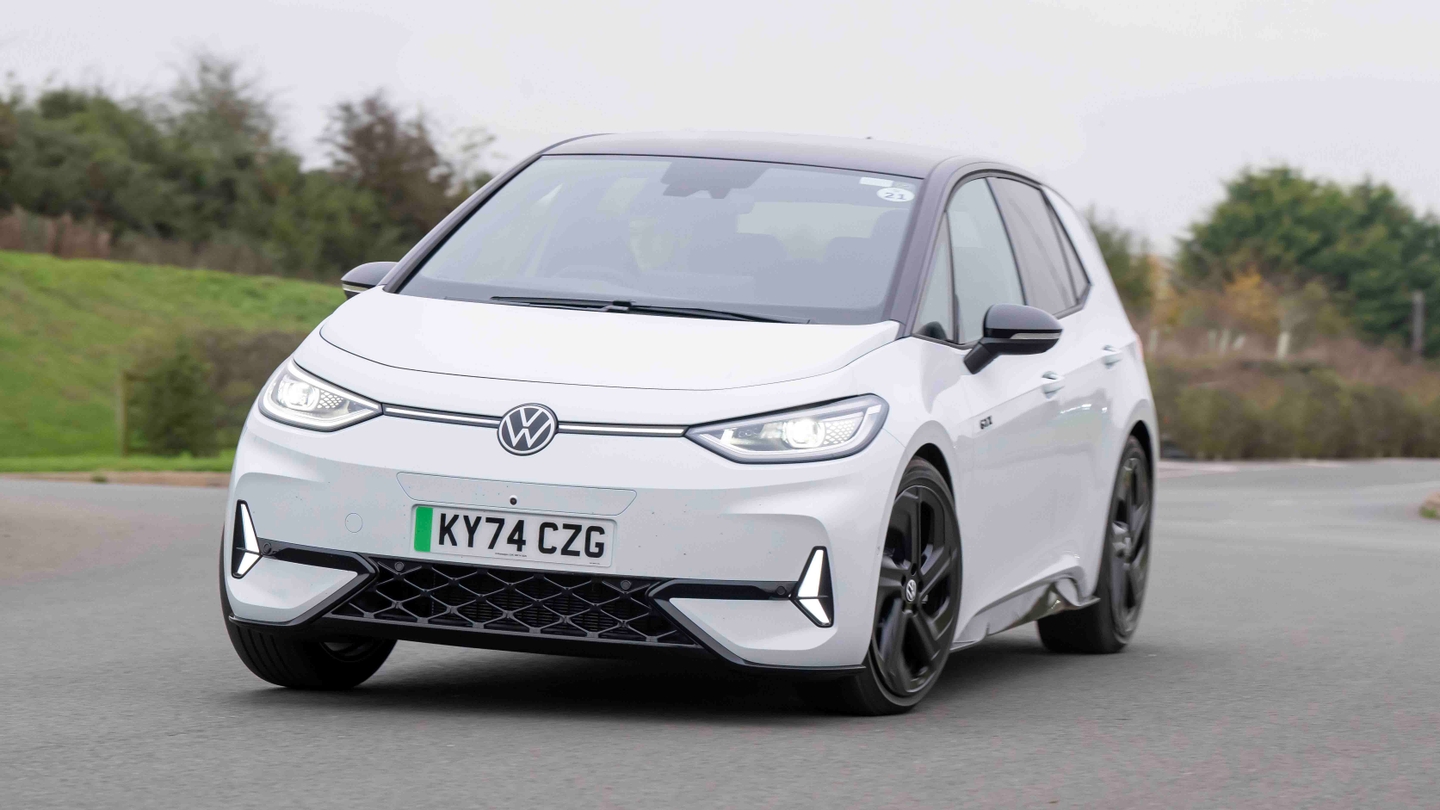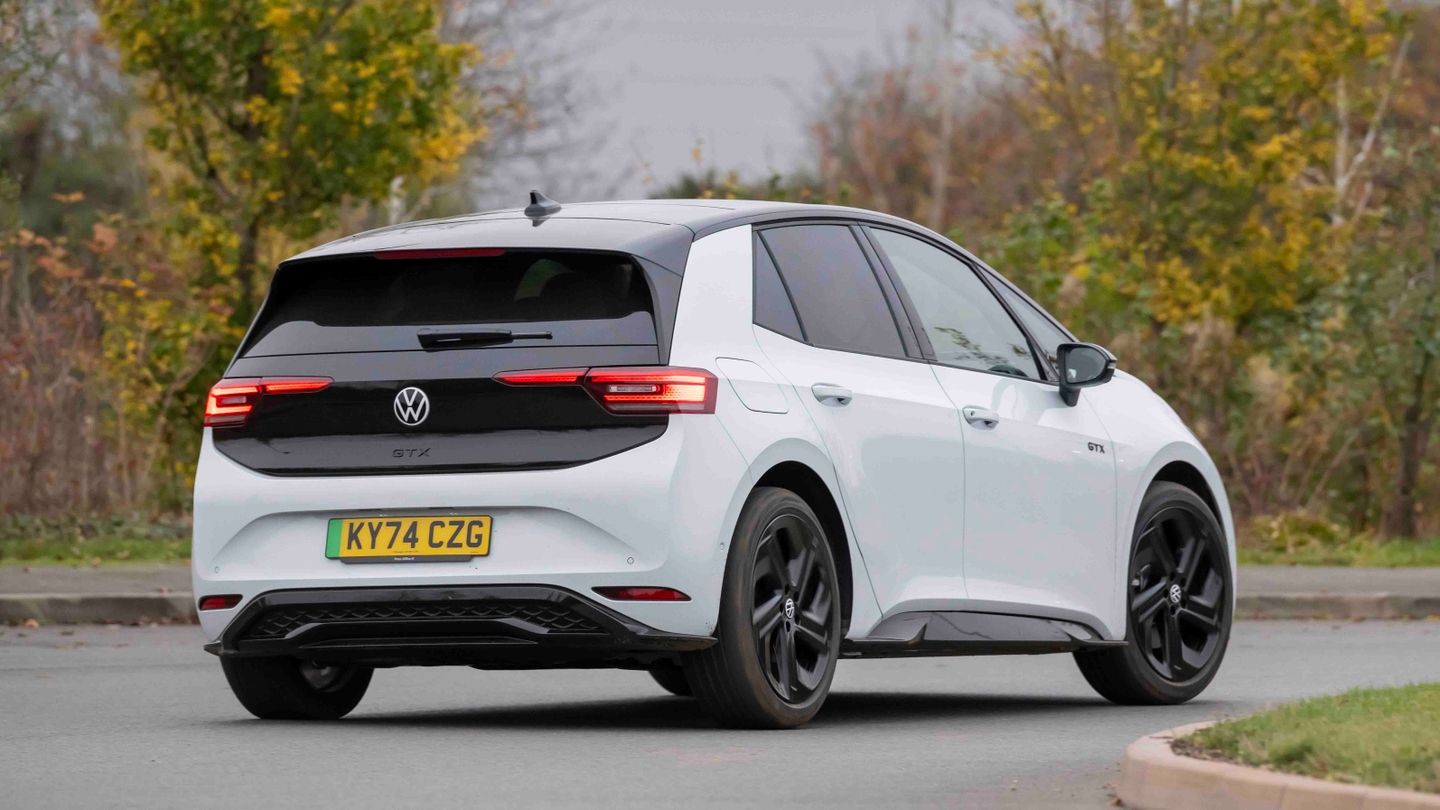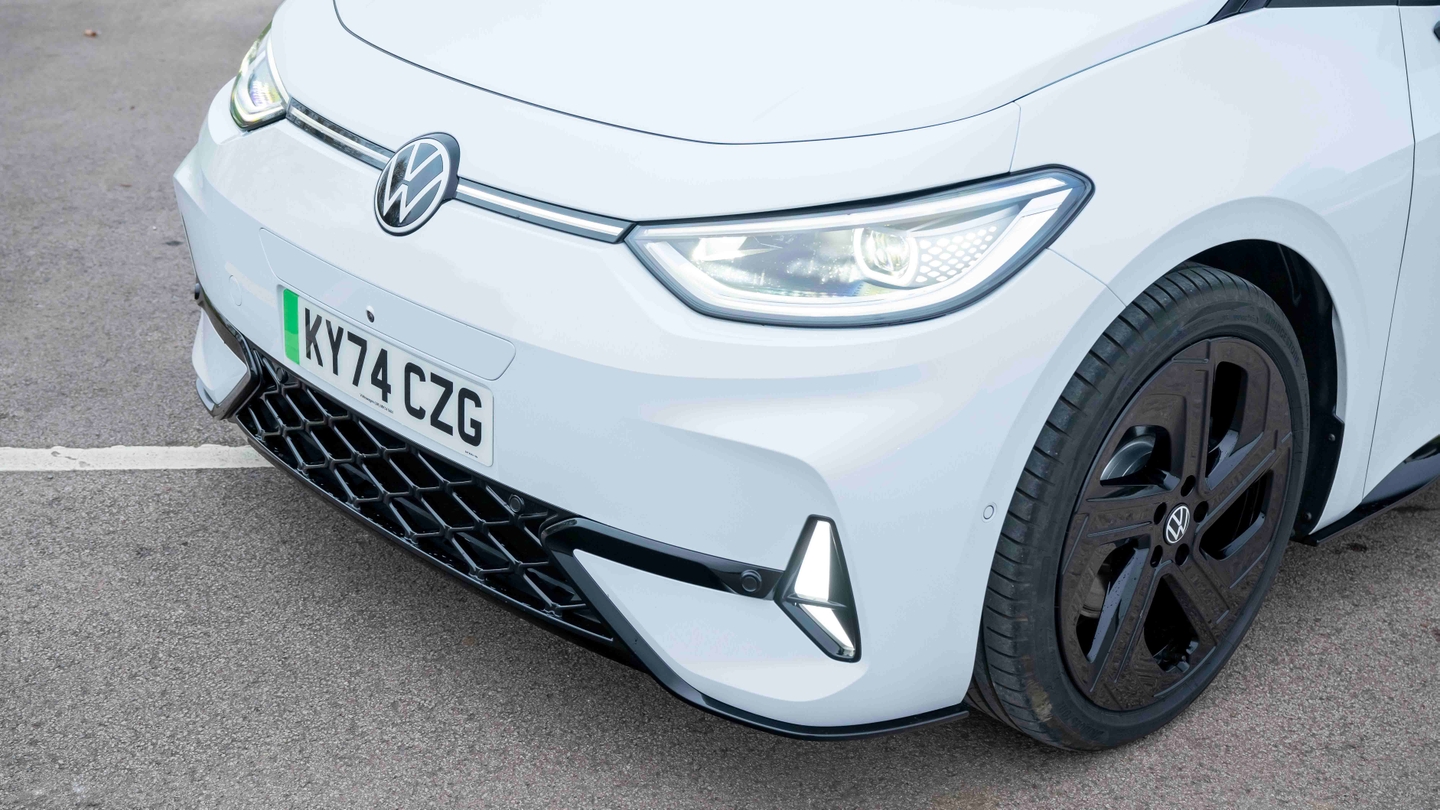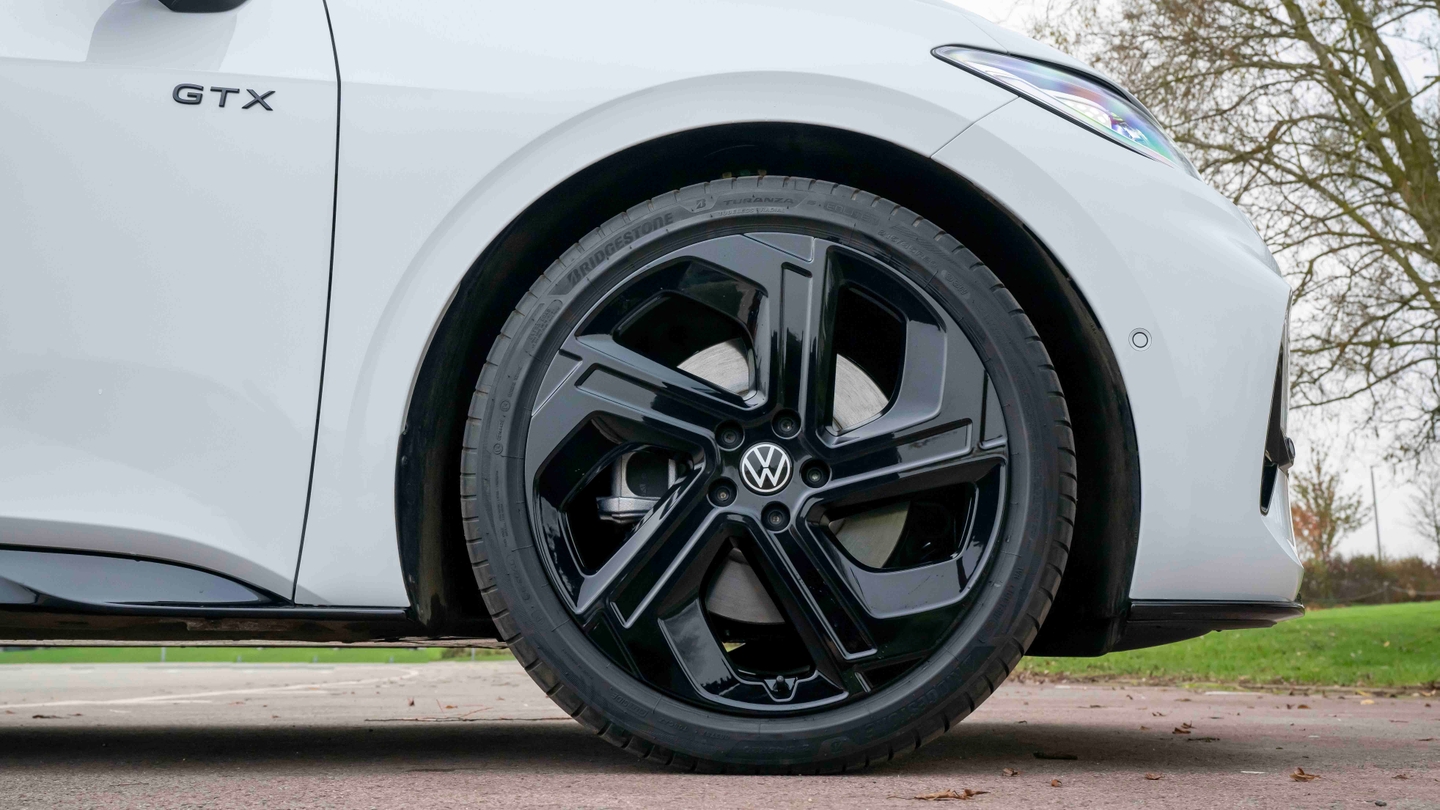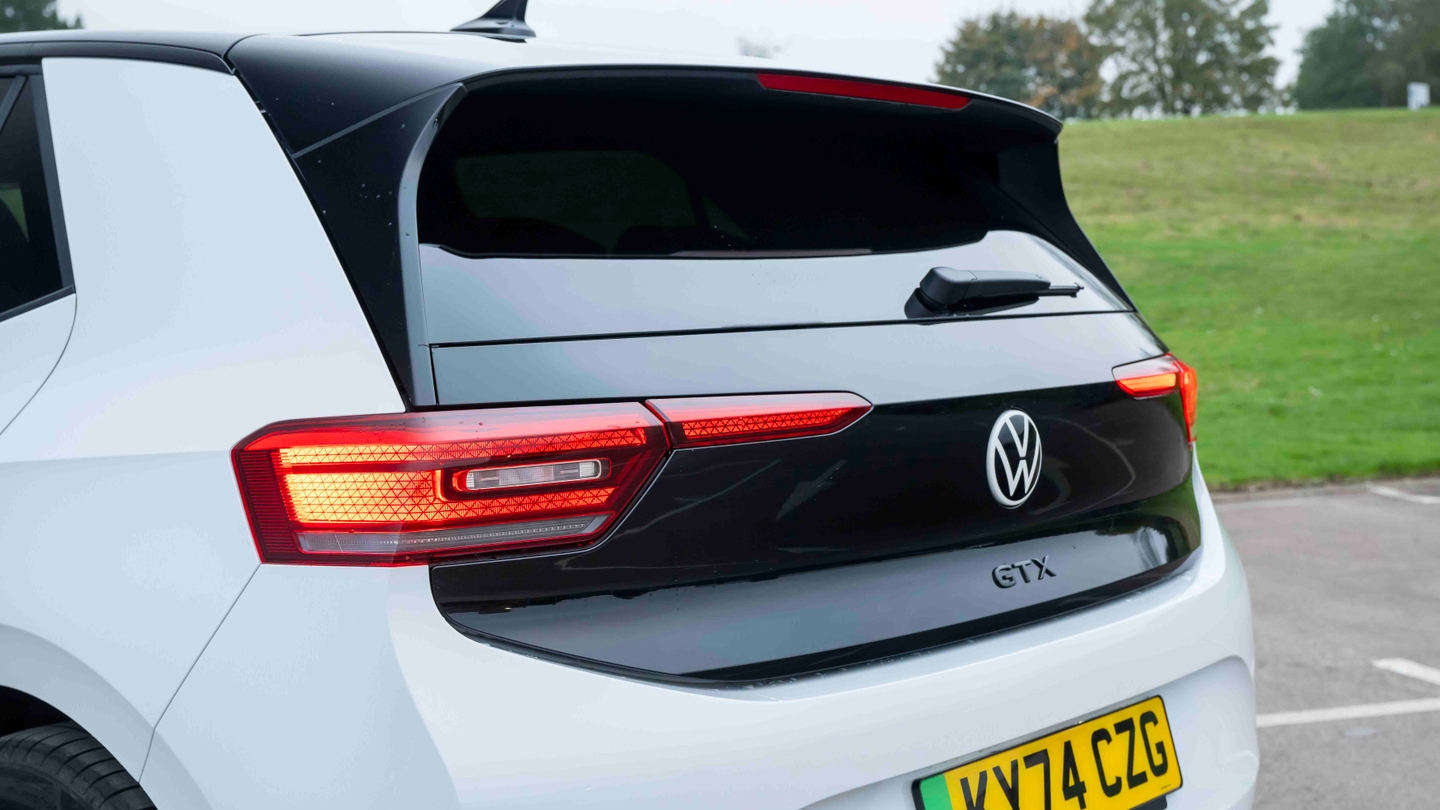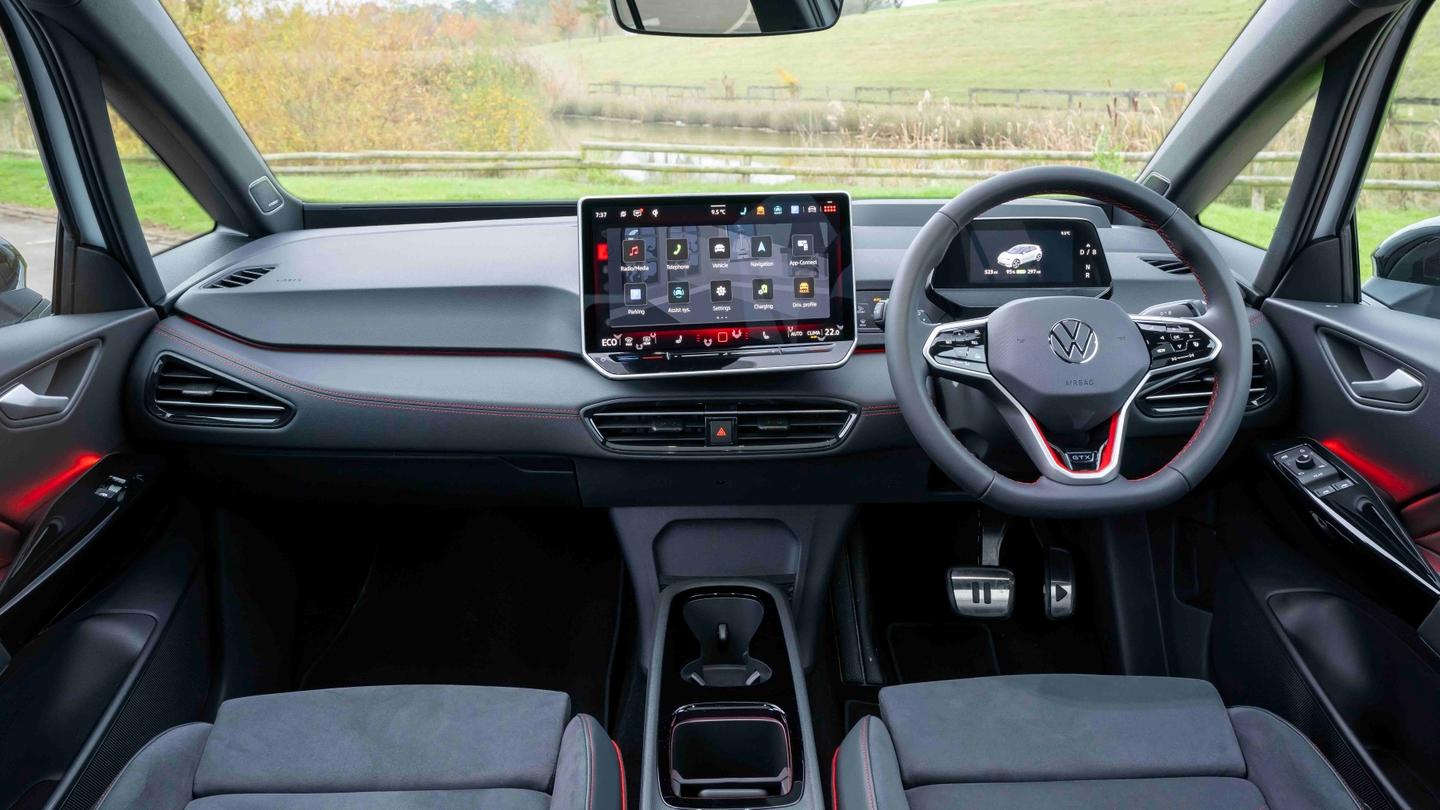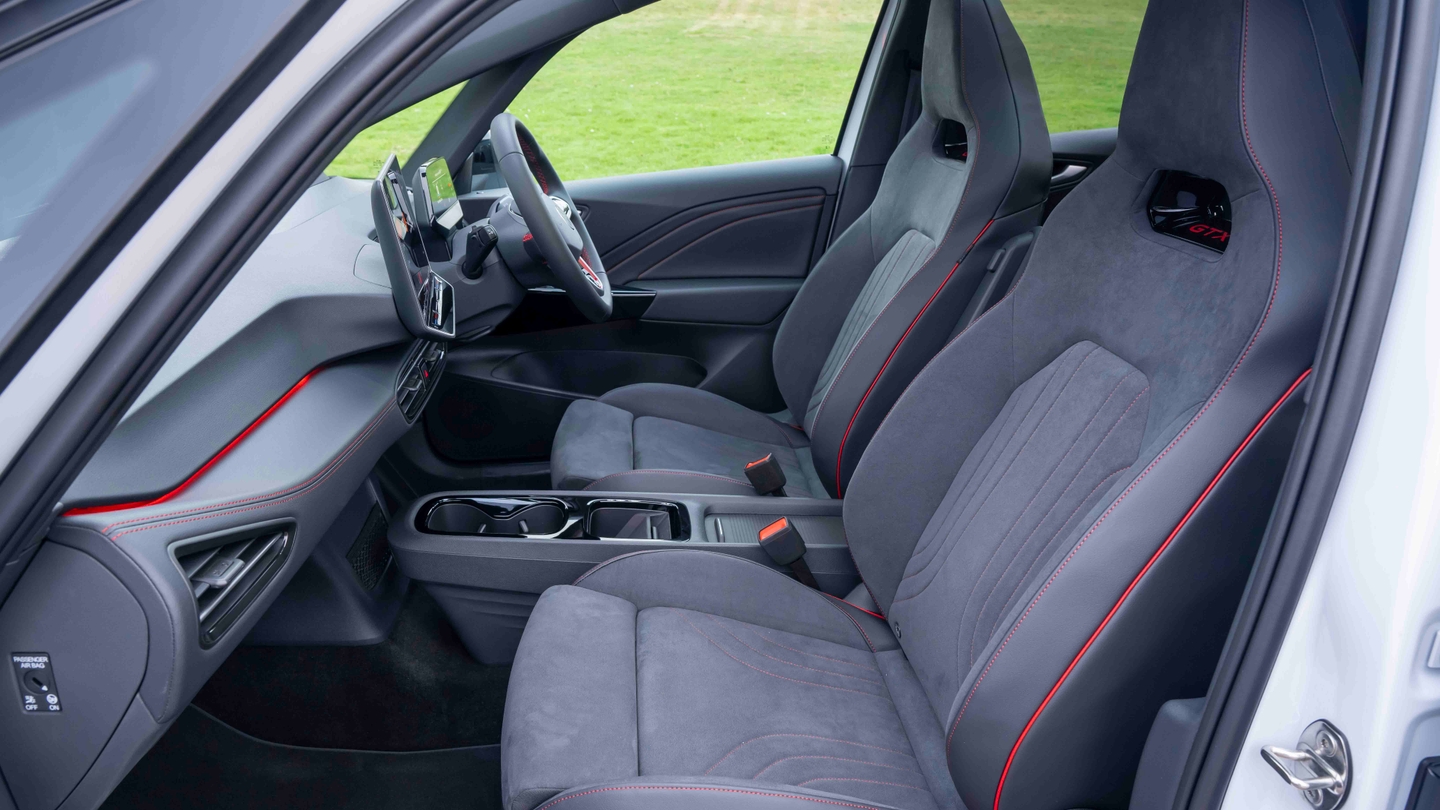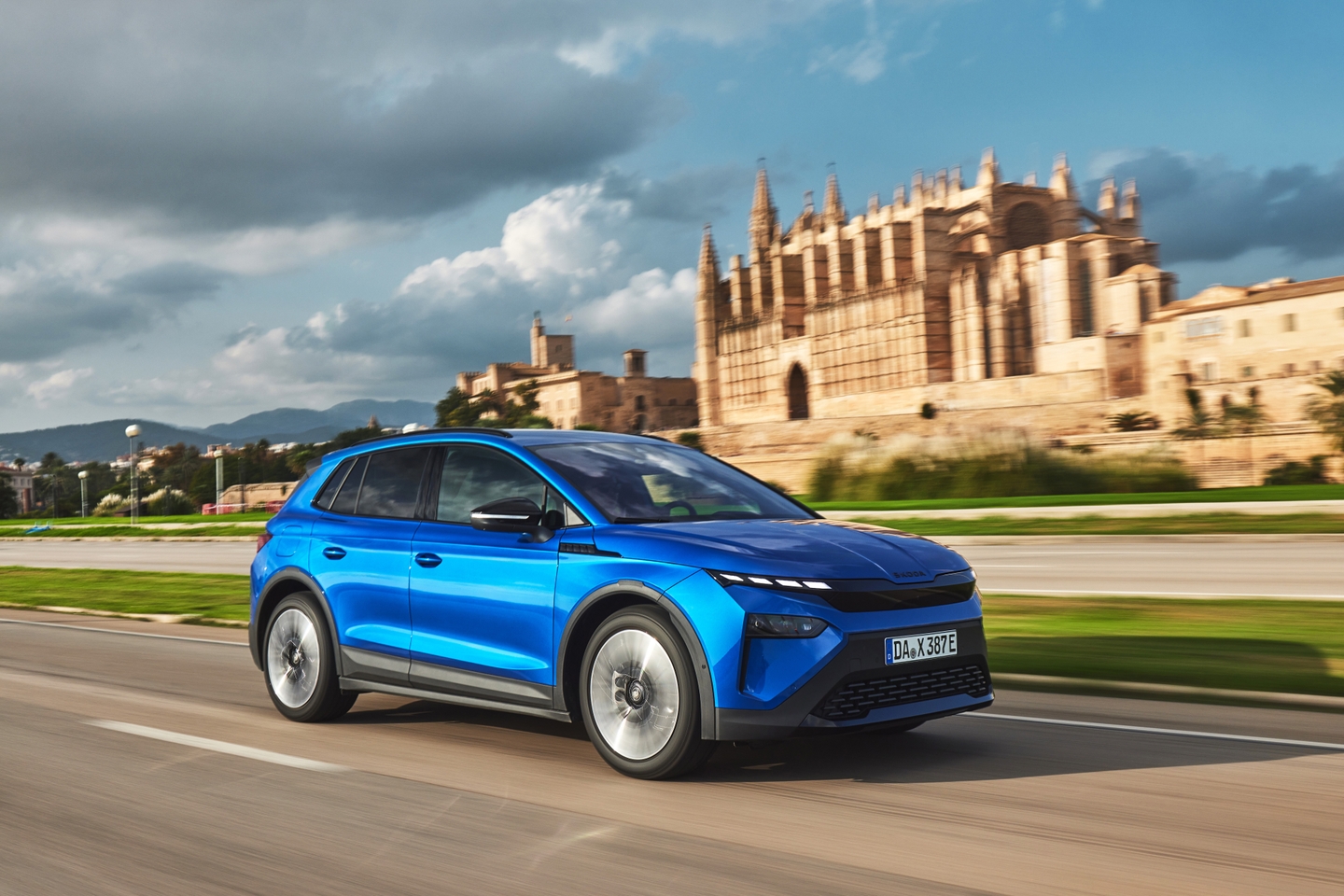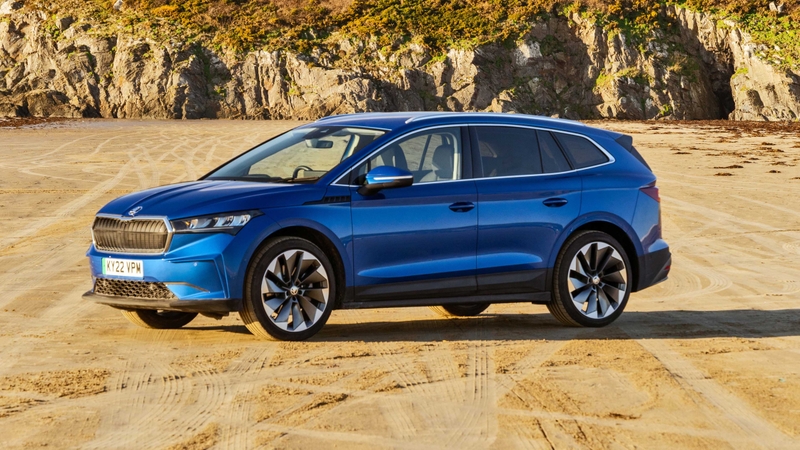
Volkswagen ID.3 GTX review
Gallery
Should I buy a Volkswagen ID.3 GTX?
You’re probably familiar with the petrol-powered Golf GTI. Well, the ID.3 GTX is a more powerful, sportified version of the battery-powered ID.3, and the recipe is fairly similar to the GTI. Take the standard car, add a beefier power source, sprinkle some red accents in the interior, and give it a slightly tweaked look with new badges.
Can an electric hot hatch give the same sort of driving thrills as a petrol one? VW has already managed to make the ID.3 more fun, in the Cupra Born, so the signs are good for its own attempt.
With 326hp, a sub-six-second 0-62mph time and rear-wheel drive, there’s no doubt that the ID.3 GTX has sports car credentials on paper. And, while the initial acceleration doesn’t quite pin you back in your seat, the mid-range performance is fantastic and the GTX keeps pushing to motorway speeds and beyond. The standard 204hp ID.3, by comparison, is still quick at low speeds and then tails off as the speed increases.
But it’s not just extra power. The GTX gets VW’s Dynamic Chassis Control (DCC), which lets you firm up or soften the suspension to your liking, and progressive steering that enables low-speed manoeuvrability and high-speed stability. The difference over the standard ID.3 isn’t night and day, but the GTX does feel a bit sportier.

Interior and technology

To set the GTX apart from the regular ID.3, the interior gets a few natty red accents – most noticeably the steering wheel trim and the stitching. The seats are more supportive than the seats in the regular car, without feeling quite as buckety as those in a full-bore performance car like the Golf R. They’re partly upholstered in soft suede, which lifts the perceived quality up a few notches.
The GTX came along when the ID.3 was facelifted, which means it gets VW’s latest infotainment system. It might look the same as before but it’s a lot easier to use, with a home screen and shortcut buttons along the top that are both configurable to your preferences. Once you’ve set up the screen to your liking – which only takes a couple of long presses – you won’t have to hunt around in lots of confusing submenus to get to your regularly used functions. It also means you can navigate to the driver assistance menu with just one tap, which is handy if you want to turn off the bonging speed limit warning every time you get in.
As the range-topping ID.3, the GTX boasts plenty of standard equipment. It sits on gloss black 20-inch alloy wheels, has a booming 480W Harman Kardon sound system, can park itself and has an augmented reality head-up display that shows you the sat nav directions on the road ahead of you. The ergoActive front seats are electrically adjustable and heated.

Practicality

The GTX is just as practical as the standard ID.3, which means huge rear legroom and an airy feel inside. Adults will have plenty of space to get comfortable in the back seats, with headroom also decent. Wide-opening doors mean it’s easy to put a child seat into the ID.3, and the Isofix points are easily accessible.
Behind, the 385-litre boot is unchanged, and five litres up on a Golf. There’s a false floor which can be used to create a cable storage area underneath the main boot – handy when there’s no storage area under the bonnet. A ski hatch in the middle rear seat lets you carry long items like skis or curtain poles while also carrying two passengers.

Range and performance

Performance is strong in the GTX, with 326hp and a 0-62mph time of 5.7 seconds. It’s two seconds quicker off the mark than a standard ID.3, which you can feel in real driving. But you could feasibly want a bit more. The GTX has a more restrained acceleration feel than a base Tesla Model 3, and doesn’t pin you back in your seat quite as much as the Tesla does.
Go faster and the difference between the GTX and a standard ID.3 is more obvious. While the standard car starts to accelerate more slowly as you get towards A-road speeds, the GTX charges on. We expect it’ll tail off as you get close to its 124mph top speed but, at motorway speeds, the GTX is never short of punch to carry out a swift overtake.
Because it uses the biggest battery in the ID.3 lineup, the GTX is also the one with the longest range. Talk about having your cake and eating it! Drive carefully and you’ll see up to 369 miles between charges, although use the available performance and you’ll be charging up more often. With no concern for efficiency, we saw 3.3 miles per kWh on our test drive, which equates to a range of 260 miles.

Driving and comfort

Every GTX in the UK is the higher-powered Performance version – other countries get a lower-powered GTX version, too – and the GTX Performance boasts VW’s DCC adaptive suspension. Fiddle with the Individual drive mode and there are 15 different comfort settings to choose from, which is far too much choice. In the firmest setting, the ride is too harsh for UK roads, seemingly finding and accentuating every bump in the road. Drop it down a few notches and the GTX becomes much more compliant over undulating B-roads – you really can notice the difference. It can be very comfortable and composed, even on bumpy surfaces.
What’s more, refinement is strong. You’ll hear a bit of tyre noise but wind noise and other ambient sounds are hidden well. With its long range and comfortable ride, this is a hot hatch that doubles up as a motorway cruiser.
There’s almost no body roll at all, so most of the time the GTX doesn’t feel like a two-tonne car. The brakes are strong, too, although a little more pedal feel wouldn’t go amiss.
It’s more fun and more tied down than a standard ID.3, but £10,000 more expensive too. The related Cupra Born VZ is marginally cheaper, and so’s a petrol GTI – although a petrol GTI will cost more in the long run than the cheap-to-fuel GTX.
































